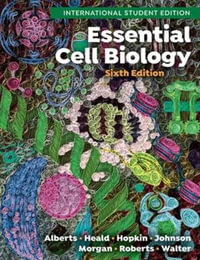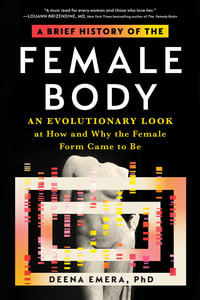| Discovery and Origins | |
| Discovery | p. 3 |
| Zwischenstrang | p. 5 |
| A Brief Overview of the Past 120 Years | p. 6 |
| 1890-1950s | p. 6 |
| 1960s-1970s | p. 9 |
| 1980s to the 21st Century | p. 9 |
| Neural Crest and Germ-Layer Theory | p. 12 |
| Germ-Layer Theory | p. 14 |
| Multiple Tissues from Single Layers | p. 15 |
| Heads and Tails | p. 16 |
| Secondary Neurulation and Tail Buds | p. 17 |
| Induction of Tail Buds | p. 18 |
| Neural Crest as the Fourth Germ Layer | p. 19 |
| Neural Crest as Inhibitor | p. 20 |
| Notes | p. 21 |
| Embryological Origins and the Identification of Neural Crest Cells | p. 23 |
| Neural Crest | p. 23 |
| Before Neurulation | p. 23 |
| Establishing the Epidermal-Neural Border | p. 25 |
| NCC Markers and Specification of the NC | p. 27 |
| HNK-1 and Pax7 | p. 28 |
| Snail-2, Bmp4, and Cadherins | p. 29 |
| Sox Genes | p. 31 |
| Wnt genes | p. 34 |
| Specification of Ectoderm as Neural or Epidermal | p. 38 |
| NC Induction | p. 39 |
| Bmps, Wnts, and Fgfs | p. 39 |
| Xenopus | p. 40 |
| Chicken Embryos | p. 42 |
| A Role for Notch in NCC Induction | p. 42 |
| A Role for Bmps in NCC Induction and Beyond | p. 46 |
| Zic3 and Zic5 | p. 47 |
| Msx Genes and Specification of NCCs | p. 49 |
| Establishing Cranial and Trunk Neural Crest | p. 51 |
| Chicken Embryos | p. 52 |
| Mouse Embryos | p. 53 |
| Ectoderm from the Most Rostral Neural Tube | p. 53 |
| Rostrocaudal Patterning of CNC | p. 54 |
| Hox Genes | p. 54 |
| A Role for Mesoderm | p. 56 |
| The Midbrain-Hindbrain Boundary | p. 57 |
| Dlx Genes and Dorsoventral Patterning of CNC | p. 58 |
| Notes | p. 58 |
| Delamination, Migration, and Potential | p. 63 |
| Delamination | p. 63 |
| Cellular Changes Driving Delamination | p. 66 |
| Cadherins | p. 68 |
| Extracellular Spaces and Delamination | p. 70 |
| Migration | p. 71 |
| Pathways of CNCC Migration | p. 71 |
| Pathways of TNCC Migration | p. 73 |
| Migration into Dorsal Fins and Tails | p. 76 |
| Molecular Control of NCC Migration | p. 78 |
| Extracellular Matrices, Cell Surface Ligands, and Receptors | p. 78 |
| Permitting Migration | p. 79 |
| Fibronectin | p. 80 |
| Proteoglycan Complexes | p. 81 |
| Neural Crest Cells Contribute to Extracellular Matrices to Permit Migration | p. 82 |
| Thrombospondins | p. 82 |
| Tyrosine Kinases Receptors (Trk) | p. 84 |
| Ephrins and Eph Receptors | p. 84 |
| Inhibiting Migration | p. 84 |
| Components of ECMs | p. 84 |
| Guiding Migrating NCCs | p. 85 |
| Barriers and Components of ECMs | p. 85 |
| The Environment at the Final Destination | p. 86 |
| Endothelins | p. 89 |
| Semaphorins, Delamination, and Migration | p. 90 |
| Subpopulations of NCCs | p. 92 |
| Restricted Premigratory and Early Migrating Populations of TNCCs | p. 94 |
| Restriction During Migration | p. 97 |
| Restriction Along the Neural Axis | p. 97 |
| Differentiation | p. 99 |
| Differentiation of Bipotential Cells | p. 110 |
| A Role for Growth Factors | p. 110 |
| Dedifferentiate and Redifferentiate | p. 111 |
| Summary | p. 112 |
| Notes | p. 113 |
| Evolutionary Origins | p. 117 |
| Precursors of the Neural Crest | p. 118 |
| Cephalochordates | p. 122 |
| Genes and Gene Networks in Cephalochordates | p. 125 |
| AmphiSnaill | p. 126 |
| Hox genes: AmphiHox1-AmphiHox12 | p. 127 |
| AmphiDll | p. 128 |
| AmphiOtx | p. 129 |
| AmphiBmp | p. 130 |
| AmphiPax | p. 130 |
| Retinoic Acid and Retinoic Acid Receptors | p. 131 |
| Urochordates-Ascidians | p. 134 |
| Nervous System and Notochord | p. 135 |
| Pigment Cells | p. 136 |
| Calcitonin | p. 136 |
| Bipotentiality and Conditional Specification | p. 137 |
| Genetic Control of Ascidian Neural Development | p. 137 |
| Bmps | p. 138 |
| Snail and Hnf3 | p. 138 |
| Pax Genes | p. 138 |
| Fossil Chordates | p. 139 |
| Burgess Shale | p. 139 |
| Chengjiang Formation | p. 140 |
| The First Vertebrates | p. 141 |
| The Pharyngeal Skeleton | p. 141 |
| The Origin of Cartilage | p. 142 |
| Comparative Genomics and Bioinformatics | p. 146 |
| Molecular Fingerprinting: Genetic Labeling/Selection and GeneChip Microarray Technology | p. 149 |
| Jawless Vertebrates and the Origin of Jaws | p. 149 |
| Jaws from Gill Arches? | p. 150 |
| Notes | p. 153 |
| Neural-Crest Derivatives | |
| Pigment Cells (Chromatophores) | p. 159 |
| Types of Chromatophores | p. 160 |
| Melanosomes | p. 162 |
| Lampreys | p. 163 |
| Urodele and Anuran Amphibians | p. 163 |
| Patterns of Pigmentation | p. 164 |
| Larval-to-Adult Patterns | p. 165 |
| Teleost Fish | p. 167 |
| Migration and Cell Fate | p. 168 |
| Larval Patterns | p. 169 |
| Genes and Cell Lines | p. 170 |
| Birds | p. 172 |
| Patterning Feather Tracts | p. 173 |
| Non-Avian Reptiles | p. 173 |
| Mammals | p. 174 |
| Pattern Formation | p. 174 |
| Neurocristopathies | p. 175 |
| Notes | p. 176 |
| Neuronal Cells and Nervous Systems | p. 179 |
| The Neural Crest, Neurons, and Nervous Systems | p. 180 |
| The Peripheral Nervous System-Spinal and Cranial Ganglia | p. 181 |
| Placodal Ectoderm | p. 183 |
| Placodal Markers and Specification of Placodal Ectoderm | p. 189 |
| The Panplacodal Domain | p. 191 |
| Induction of Individual Placodes | p. 192 |
| The Autonomic Nervous System | p. 193 |
| Schwann Cells | p. 195 |
| Glial Cells | p. 195 |
| Vagal and Sacral Neural Crest | p. 197 |
| Rohon-Beard Neurons | p. 197 |
| Apoptosis Removes R-B Neurons | p. 198 |
| Neural Crest Origin and Relationships to Other Neurons | p. 198 |
| Genetic Control of R-B Neurons | p. 199 |
| Notes | p. 200 |
| Cartilage Cells and Skeletal Systems | p. 203 |
| Pharyngeal Skeletons of Hagfish | p. 205 |
| Pharyngeal Skeletons of Lamprey | p. 208 |
| Cartilages | p. 208 |
| Vitamin A | p. 213 |
| Amphibian Craniofacial Skeletons | p. 213 |
| Extirpating and Transplanting Amphibian Neural Crest | p. 214 |
| Epithelial-Mesenchymal Interaction Required to Initiate Chondrogenesis | p. 217 |
| Cascades of Interactions in Amphibian Craniofacial Development | p. 218 |
| Labeling Amphibian CNCCs | p. 221 |
| Timing of Migration | p. 223 |
| Mapping CNCCs in Fish | p. 227 |
| Elasmobranchs | p. 227 |
| Teleosts | p. 228 |
| Zebrafish Mutants and Pharyngeal Arch Development | p. 228 |
| Distalless (Dlx) and the First and Second Pharyngeal Arches | p. 228 |
| Chameleon (Con) and the Caudal Pharyngeal Arches | p. 229 |
| Chinless (Chn) and the Absence of NCC from all Pharyngeal Arches | p. 229 |
| Ninja and the Growth of Pharyngeal Arch Cartilages | p. 229 |
| Skeletogenic NCCs in Reptiles | p. 230 |
| CNCCs | p. 230 |
| TNCCs | p. 231 |
| Avian CNCCs | p. 231 |
| 3H-thymidine Labeling | p. 231 |
| Quail/Chicken Chimeras | p. 232 |
| The Chondrogenic CNC | p. 232 |
| Cell Lineages in CNCCs | p. 233 |
| CNCCs and Muscle Patterns | p. 237 |
| Mapping the Mouse CNC | p. 238 |
| Notes | p. 244 |
| Teeth and Hearts: The Odontogenic and Cardiac Neural Crests | p. 247 |
| Teeth | p. 247 |
| The Odontogenic Neural Crest | p. 248 |
| Teeth but not Cartilage from Trunk NCCs | p. 250 |
| Cartilage from TNCCs? | p. 252 |
| Origination of Dentine and Bone | p. 253 |
| Hearts | p. 255 |
| Indirect Effects of Cranial NCCs on Heart Function | p. 256 |
| Direct Effects of Cranial NCCs on Heart Function | p. 256 |
| The Avian Cardiac Neural Crest | p. 257 |
| Cardiac Cartilages | p. 260 |
| Cardiac Neural Crest in Fish and Amphibians | p. 261 |
| Cardiac Neural Crest in Mammals | p. 261 |
| Cardiac Defects | p. 262 |
| Notes | p. 264 |
| Abnormal Development and the Neural Crest | |
| Neurocristopathies | p. 269 |
| Antiquity | p. 269 |
| Syndromology and Neural Tube Defects | p. 269 |
| The Utility of the Germ-Layer Theory | p. 271 |
| Types of Neurocristopathies | p. 273 |
| CHARGE Syndrome | p. 276 |
| PAX6 and CHD7 | p. 276 |
| Neuroblastomas | p. 278 |
| The Neoplastic State | p. 278 |
| Diagnosis | p. 279 |
| RaLP | p. 279 |
| Model Systems | p. 280 |
| von Recklinghausen Neurofibromatosis | p. 280 |
| Involvement of Non-Neural-Crest Cells | p. 282 |
| John Merrick-the 'Elephant Man' | p. 282 |
| Animal Models and Mutations | p. 283 |
| APUDomas | p. 284 |
| Hirschsprung Disease | p. 286 |
| DiGeorge Syndrome | p. 288 |
| Genetics | p. 289 |
| Genes Involved | p. 289 |
| Notes | p. 291 |
| NCC Development Revisited in the Context of Birth Defects | p. 295 |
| Susceptible Stages of Neural Crest Development | p. 298 |
| Defective Migration | p. 299 |
| Defective Proliferation | p. 300 |
| Enhanced Cell Death | p. 300 |
| Defective Induction | p. 301 |
| Vitamin A, Craniofacial Defects, and the Neural Crest | p. 302 |
| Direct Action In Vivo | p. 302 |
| Craniofacial Defects | p. 305 |
| Mechanisms of Action | p. 308 |
| Indirect Effects | p. 309 |
| Evolutionary Origins of Sensitivity to Retinoic Acid | p. 309 |
| Defects Following Disruption of the Hox Code | p. 310 |
| Hoxa1 | p. 310 |
| Hoxa2 | p. 311 |
| Hoxa1, Hoxa2, and Hoxb1 | p. 311 |
| Mutations and Birth Defects | p. 312 |
| Looptail | p. 312 |
| Splotch | p. 312 |
| Regulation | p. 314 |
| Sources of Cells | p. 316 |
| Completeness of Regulation | p. 316 |
| Pharyngeal-Arch Regulation | p. 317 |
| Dorsal Root Ganglion Regulation | p. 317 |
| Regulation of Cardiac Neural Crest | p. 319 |
| Placodal Regulation from the Cardiac Neural Crest? | p. 320 |
| Neural Crest Cells as Stem Cells | p. 321 |
| Bi-, Tri-, and Multipotential NCCs | p. 321 |
| What is a Stem Cell? | p. 322 |
| NCCs as Stem Cells | p. 323 |
| Notes | p. 325 |
| Common Names of Species Discussed | p. 329 |
| Species (with Common Names) Arranged by Major Groups | p. 333 |
| References | p. 339 |
| Index | p. 387 |
| Table of Contents provided by Ingram. All Rights Reserved. |
























